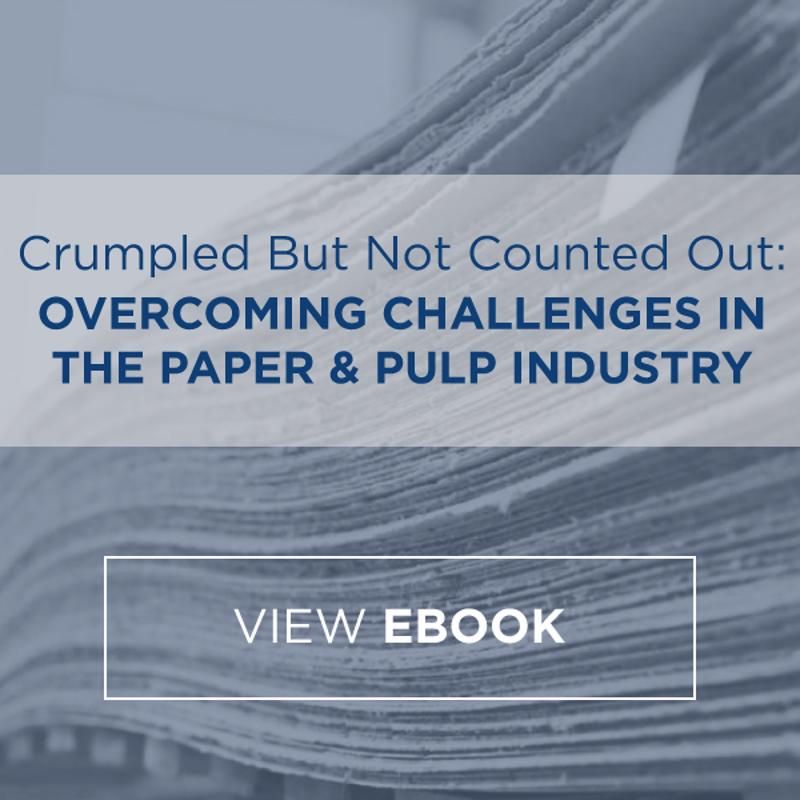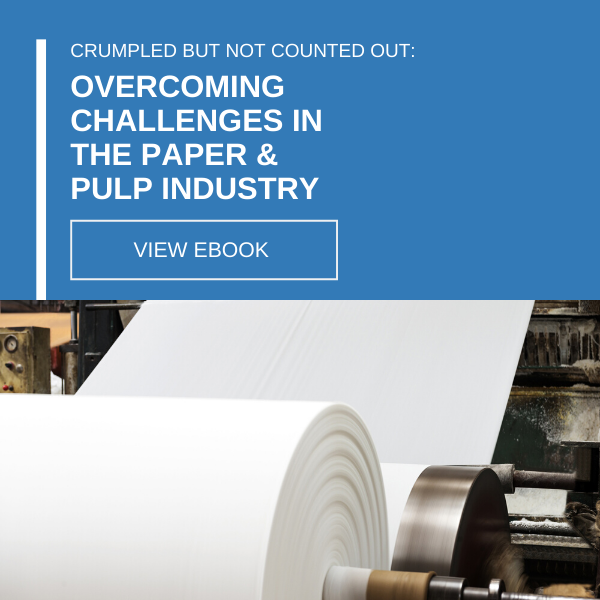-
Subscribe to Blog:
SEARCH THE BLOG
CATEGORIES
- Aerospace
- Asset Maintenance
- Automotive
- Blog
- Building Products
- Case Studies
- Chemical Processing
- Consulting
- Food & Beverage
- Forestry Products
- Hospitals & Healthcare
- Knowledge Transfer
- Lean Manufacturing
- Life Sciences
- Logistics
- Manufacturing
- Material Utilization
- Metals
- Mining
- News
- Office Politics
- Oil & Gas
- Plastics
- Private Equity
- Process Improvement
- Project Management
- Spend Management
- Supply Chain
- Uncategorized
- Utilities
- Whitepapers
BLOG ARCHIVES
- July 2024 (4)
- June 2024 (3)
- May 2024 (3)
- April 2024 (4)
- March 2024 (3)
- February 2024 (4)
- January 2024 (5)
- December 2023 (2)
- November 2023 (1)
- October 2023 (6)
- September 2023 (3)
- August 2023 (4)
- July 2023 (2)
- June 2023 (3)
- May 2023 (7)
- April 2023 (3)
- March 2023 (3)
- February 2023 (5)
- January 2023 (6)
- December 2022 (2)
- November 2022 (5)
- October 2022 (5)
- September 2022 (5)
- August 2022 (6)
- July 2022 (3)
- June 2022 (4)
- May 2022 (5)
- April 2022 (3)
- March 2022 (5)
- February 2022 (4)
- January 2022 (7)
- December 2021 (3)
- November 2021 (5)
- October 2021 (3)
- September 2021 (2)
- August 2021 (6)
- July 2021 (2)
- June 2021 (10)
- May 2021 (4)
- April 2021 (5)
- March 2021 (5)
- February 2021 (3)
- January 2021 (4)
- December 2020 (3)
- November 2020 (3)
- October 2020 (3)
- September 2020 (3)
- August 2020 (4)
- July 2020 (3)
- June 2020 (5)
- May 2020 (3)
- April 2020 (3)
- March 2020 (4)
- February 2020 (4)
- January 2020 (4)
- December 2019 (3)
- November 2019 (2)
- October 2019 (4)
- September 2019 (2)
- August 2019 (4)
- July 2019 (3)
- June 2019 (4)
- May 2019 (2)
- April 2019 (4)
- March 2019 (4)
- February 2019 (5)
- January 2019 (5)
- December 2018 (2)
- November 2018 (2)
- October 2018 (5)
- September 2018 (4)
- August 2018 (3)
- July 2018 (2)
- June 2018 (4)
- May 2018 (3)
- April 2018 (3)
- March 2018 (2)
- February 2018 (2)
- January 2018 (1)
- December 2017 (1)
- November 2017 (2)
- October 2017 (2)
- September 2017 (1)
- August 2017 (2)
- July 2017 (2)
- June 2017 (1)
- April 2017 (3)
- March 2017 (3)
- February 2017 (2)
- January 2017 (2)
- December 2016 (2)
- November 2016 (4)
- October 2016 (4)
- September 2016 (3)
- August 2016 (6)
- July 2016 (4)
- June 2016 (4)
- May 2016 (1)
- April 2016 (3)
- March 2016 (4)
- February 2016 (2)
- January 2016 (4)
- December 2015 (3)
- November 2015 (3)
- October 2015 (1)
- September 2015 (1)
- August 2015 (4)
- July 2015 (6)
- June 2015 (4)
- May 2015 (7)
- April 2015 (6)
- March 2015 (6)
- February 2015 (4)
- January 2015 (3)
CONNECT WITH US
Tag Archives: Waste Reduction
If you’re in manufacturing, you’ve certainly heard of two process methodologies, Lean and Six Sigma. Lean, which has been around forever and has recently migrated from the manufacturing floor into other industries (they’re even talking about Lean HR methods) and Six Sigma, a newer technique. Two sides of the same coin, Lean looks at making processes more efficient and reducing lead times, while Six Sigma focuses on cutting down on defects. Both are useful goals when aiming to optimize your processes, throughput and ultimately, your bottom line.
Lean vs Six Sigma, which is better? Which should you be investing in if you’re coming up against inefficiencies in your production, and can they be used together?
Let’s take a closer look at both methodologies to see who comes out on top in this operational improvement matchup.
Lean
The whole concept of Lean started with identifying and eliminating waste in manufacturing operations. Pioneered back in the day by Toyota… or by Henry Ford even earlier, depending on who you ask, Lean manufacturing is about cutting costs, eliminating waste in both processes and products, and generally becoming as “lean and mean” as possible to reach optimal efficiency. The heart of the process is identifying and eliminating what Toyota called the “seven deadly wastes.” (We happen to think it’s eight.)
- Overproduction. Making too much leaves you with unused product.
- Waiting. This includes waiting on the shop floor between steps on the line, or waiting on supply or even equipment.
- Transporting. This covers excessive movement of inventory, causing the possibility of damage, or even excessive movement within the manufacturing process itself.
- Processing. Do you have extra, unnecessary steps in the manufacturing process? Are you doing in two or three steps what you can do in one?
- Inventory. Too much stock on hand. During the pandemic, many companies combatted supply chain delays by stocking up on inventory. We think that’s a mistake.
- Excess motion. This means getting from Point A to Point B on the floor, extra walking, lifting, reaching. Can things be configured more efficiently?
- Defects. Defects in product happen to the best of us.
- People. This is the eighth waste, which Toyota didn’t identify. Are you using your people to their fullest potential? Or is there untapped potential for a great manager or supervisor you haven’t noticed?
Examining all of these areas of “wastes” in your operation will help you become more efficient and ultimately more profitable. In other words, lean and mean.
Six Sigma
Six Sigma, at its most basic level, is about quality control. Minimizing flaws and defects. But it’s much deeper than that. Six Sigma is data driven, statistical and aims to improve cycle time while eliminating or reducing defects in manufacturing. It’s about using stats, data analysis and also project management techniques to improve the whole process.
The Six Sigma process is defined by an acronym: DMAIC. Define, Measure, Analyze, Improve and Control. First, you define the problem that you want to improve. Then, the team measures the process and analyzes it by using data analytics to get to the root of the problem. From there, it’s about creating improvements and fixes, and setting up controls to make sure it doesn’t happen again.
Six Sigma requires rigorous training to get the process right, so rigorous that practitioners need a certification in the process. The certifications are ranked with a belt system similar to martial arts, with white belts being familiar with the basic process, up to black belts who become masters of the process and are certified to take on complex problems and projects, and to train others in it.
Lean Six Sigma: Better together?
Should it really be Lean vs Six Sigma? Or rather Lean AND Six Sigma? Can these two powerful methods be used together? Yes indeed. In fact, they’ve joined to become one methodology in some circles: Lean Six Sigma, or LSS, which aims to cut defects and shorten lead times.
But, here’s the tricky part.
Ironically, Lean and Six Sigma can clash if not deployed correctly. Defects can be reduced by slowing processes down — reducing speed. On the other hand, you can increase the defect rate by speeding up processes.
Getting it right, striking that perfect balance is imperative. That’s why it requires training and certification in the techniques. At USCCG, Dr. Frank Esposto is our Lean Six Sigma Master Black Belt and Senior Director of Quality. He is also a certified LSS instructor.
Dr. Esposto states, “When we employ the Lean Six Sigma methodology to help our clients’ operations, we don’t simply come in and do it for them. We train clients in these techniques so they can employ them long after we leave.”
The training course Frank teaches is rigorous and hands-on. When participants complete the course, they are certified. Being certified in Lean Six Sigma is a highly sought-after skill.
To summarize, it is not Lean vs Six Sigma, but rather Lean Six Sigma – two complimentary methodologies that when balanced properly reduce operating costs, increase throughput, and achieve overall improvement to your bottom line.
Are you interested in learning more about how these powerful methodologies can work to optimize your processes? Give us a call today. In the meantime, read much more about LSS in our eBook: “Lean Six Sigma: Do You Really Know These Methodologies?”
Did the unprecedented supply chain disruptions caused by the pandemic kill the just-in-time (JIT) manufacturing model? We’d like to come out with a resounding “No!” to answer that question, but it definitely was a topic for discussion among many different types of manufacturers over the past 18 months. Here’s a bit of backstory on that, and why we feel Just-In-Time manufacturing will be more important than ever going forward.
Just-In-Time, or Lean manufacturing, took a hit during COVID, there’s no debate about that. As more and more critical inventory didn’t arrive when manufacturers across many types of industries needed it, it created alarming shortages and delays. Consumers started “panic buying,” driving demand into the stratosphere when manufacturers didn’t have the supply to meet it — remember trying to get toilet paper in the early days of the shutdown? It caused many manufacturers to go back to a “safety stock” method, which is calculated by looking at your average daily use of any given thing and multiplying that by your average lead time to get it. Since the lead times went through the roof with border shutdowns and other delays, manufacturers stocked up, making sure they had more than they needed to get the job done at any point in time.
But that flew in the face of Lean manufacturing principles, which, not for nothing, have been around since the 1930s. The Lean Enterprise Institute defines it this way: “Changing the focus of management from optimizing separate technologies, assets, and vertical departments to optimizing the flow of products and services through entire value streams.”
Just-In-Time Origins
A very short history, in case you’re not familiar with how it all began: Lean manufacturing has been credited to Toyota founder Sakichi Toyoda, his son Kiichiro and their chief engineer, Taiichi Ohno. The whole point of the concept was to look at common areas of waste in manufacturing operations and eliminate them to create greater efficiency on the line. And really, in this post-pandemic age, don’t we all want to subscribe to less waste and more efficiency?
The 7 wastes (or is it really 8?)
Let’s look at the classic “seven wastes” identified by Toyota’s Lean manufacturing model, and think about adding one more.
Overproduction. This is making more product than your customers are demanding. It leaves you with unused product.
Waiting. This could be waiting on the shop floor between steps on the line, or waiting on supply or even equipment.
Transporting. Waste in the transportation stage could either mean excessive movement of inventory, causing the possibility of damage, or even excessive movement within the manufacturing process itself. Think about how close equipment is to each other, and the efficiency of movement of product down the line.
Processing. This is one area where we tend to find opportunities for greater efficiency for many of our clients. It involves extra, unnecessary steps in the manufacturing process on the line.
Inventory. Inventory problems come in the form of having too much stock on hand. The “safety stock” method contributes to it, but it can also be the culmination of overproduction.
Excess motion. Similar to transportation, the motion piece of this puzzle focuses on unnecessary or excessive movement. It’s about how the job gets done. Extra walking, lifting, reaching. Think of it as the ergonomics of the workplace. How close are tools when you need to tweak something on the machinery?
Defects. Defects in product happen to the best of us. But, there are ways to focus on cutting down defects, including detecting potential snafus before they become bigger problems.
Within the past few years, an addition to these classic “seven wastes” has been cropping up in conversations and in blogs about manufacturing.
People. This is about taking a close look at the untapped potential of your people. If your boots on the ground are just doing the job by rote, you’re not taking advantage of ideas and knowledge they may have gained for more efficient ways to get the job done. This is one of the reasons we involve frontline workers in our efforts.
Examining all of these areas of “wastes” in your operation will help you become more efficient and ultimately more profitable. In times of demand uncertainty, that’s more important than ever.
At USC Consulting Group, we’re dedicated to help our customers find more efficiencies in their process no matter what the economy is doing. If you’d like to learn more, please contact us today.
If you’d like to read more in depth about why Lean practices make sense, read our blog, “5 Reasons Why You Need to Stick with Lean Manufacturing Principles.”
Marketplace forces are transforming the pulp and paper manufacturing space, from mass digitization to the maturation of the paperless movement. Many have responded by reinventing their production processes in an effort to access alternative revenue streams and reduce overhead costs, which is particularly consequential as both lumber and sawlog prices continue to surge, according to research from Benzinga.
But how exactly are pulp and paper manufacturers trimming the costs of production? Here are some proven optimization strategies in use in the industry today:
1. Waste reduction
Pulp and paper manufacturing facilities generate a lot of waste. In fact, one researcher found that the average pulp and paper mill produces between 40 and 50 kilograms of dry sludge waste per ton of finished paper product. This byproduct creates considerable operational complexity. Companies must have hazardous waste workflows in place to properly dispose of industrial sludge, supporting infrastructure that greatly affects the bottom line. For instance, organizations must devote considerable resources to establishing processes that comply with Environmental Protection Agency and Occupational Safety and Health Administration standards. Of course, the very presence of waste, especially in great volume, indicates raw material disuse which carries its own budgetary implications.
In recent years, leading pulp and paper manufacturers such as the International Paper Company have turned their focus to reducing waste and the expenses that come with it. IPP implemented new milling techniques that allow production teams to incorporate once-wasted lose fibers into product mixes. The company also boasts robust recovery and reuse programs, which facilitate further reductions in waste. In 2017, IPP engineered a total wastage decrease of 9 percent. The pulp and paper powerhouse intends to reduce manufacturing waste by 30 percent within two years, with the larger goal of achieving zero wastage sometime in the near future.
2. Production optimization
Modern pulp and paper manufacturing facilities leverage fairly advanced production processes, but inefficiencies are still rampant – most notably, because of ineffective supply chain transparency, according to The Forest Trust. How are businesses in the industry addressing these issues? Production optimization via digitization.
Leaders in the space have put into place large-scale data collection programs wherein operational teams leverage industrial sensors and robust information processing, sharing and storage platforms to gather transformative shop floor insights. This data can anchor production improvements with serious bottom line-building potential. For example, one U.K.-based pulp and paper manufacturer increased annual revenues by 11 percent by rolling out a data-backed overall equipment effectiveness initiative, according to the Confederation of European Paper Industries.
3. Strategic sourcing
With raw material costs increasing, companies in the sector must embrace alternative procurement processes to keep overhead expenses under control. Strategic sourcing is perhaps the most effective method for accomplishing this lofty aim, which entails ensuring vendor contract adherence, conducting regular sourcing reviews, and forming relationships with multiple materials providers to achieve the best prices possible. These strategic sourcing practices allow pulp and paper manufacturing companies to keep the cost of production as low as possible, even as raw material prices increase.
Organizations in this niche industry must work quickly to reduce operating costs and build room into the budget to address rising raw material expenses. These strategies can make a significant difference by enabling pulp and paper producers to lay the groundwork for sustained success. But implementing such changes alone can be difficult. USC Consulting Group can help, leveraging decades of consulting experience to help firms in the space catalyze cost reduction.
Contact USCCG today to learn more about our work in the pulp and paper manufacturing space.







